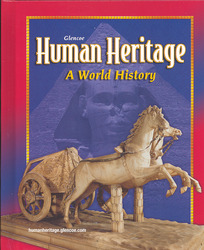Human Heritage: A World HistoryChapter 28:
The RenaissanceWeb Activity Lesson Plans“Renaissance Man”Introduction
Students have read about the Renaissance in western Europe and one of its greatest contributors, Leonardo da Vinci. In this exercise, students will investigate the works of Leonardo da Vinci, including his designs, his art, and his inventions, to learn why he is representative of the Renaissance period. Lesson Description
Students will use information from the Web site to learn about Leonardo da Vinci. Students will browse the site to read about his mechanical designs, his weapon designs, his scientific investigations, his painting, and his sculpture. They will also have the opportunity to visit interactive exhibits based on the studies of da Vinci. Students will then answer four questions and apply this information by imagining they are students of da Vinci and writing journal entries detailing a day spent with him. Instruction Objectives
- Students will be able to identify the characteristics of the Renaissance as embodied in the works of Leonardo da Vinci.
- Students will be able to use this knowledge to write a journal entry detailing a day spent with Leonardo da Vinci.
Student Web Activity Answers
- Leonardo da Vinci designed all sorts of things, including weapons, churches, fortresses, machinery, canals, a tank, a submarine, flying machines, and a crane. Some that resemble modern technology include a personal underwater breathing apparatus, a helicopter, a hang glider, and a bicycle.
- Leonardo's primary scientific method was that of observation. He observed the world and recorded what he saw. Then, he decided what he could do to duplicate or improve what he observed. He studied anatomy, zoology, botany, geology, optics, aerodynamics, and hydrodynamics, among other subjects.
- Because of war, Leonardo had to keep searching for new patrons to sponsor his activities. He traveled as a military engineer and designed many weapons and combat devices. He also painted the "Battle of Anghiari." Duke Sforza had commissioned him to design a huge statue of a horse, but before it could be cast in bronze, French archers destroyed the clay statue during their attack on Milan.
- Leonardo was never satisfied to get his knowledge from books. To learn more about the human anatomy and the muscles and bone that lay under the skin, he dissected cadavers to examine and draw them.
- Students' journal entries will vary.
 | 




